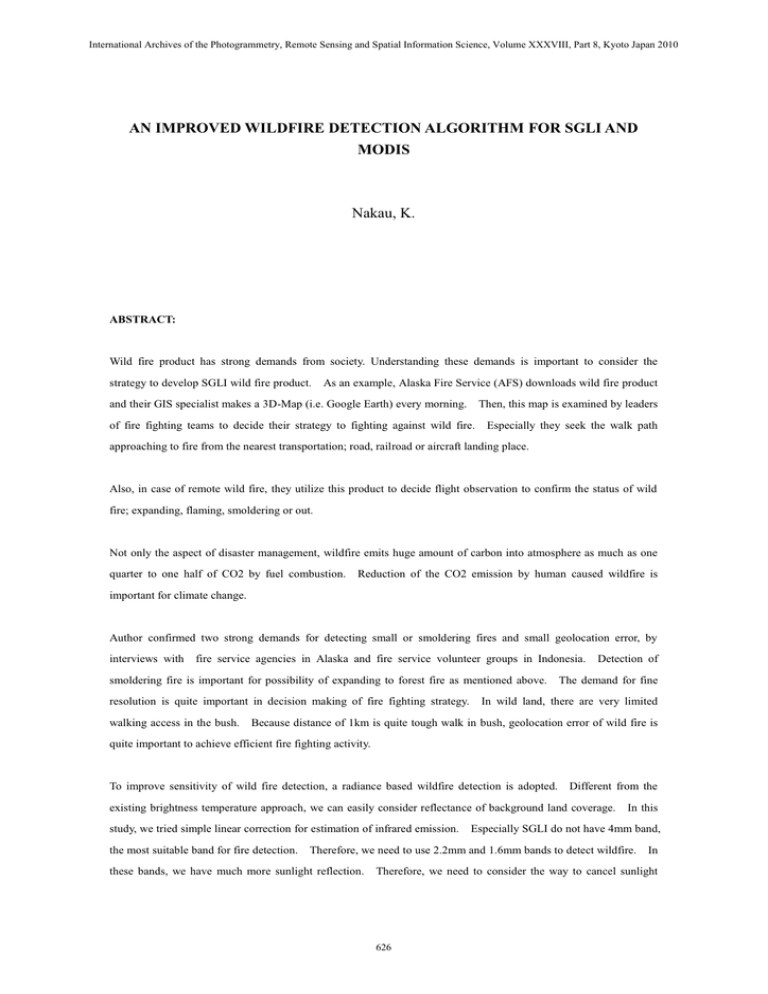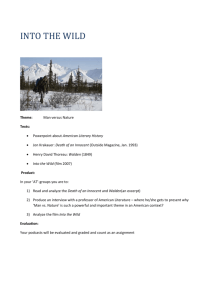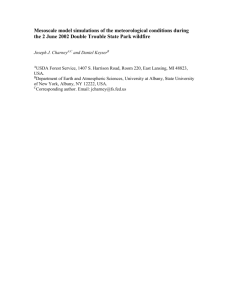Document 11842157
advertisement

International Archives of the Photogrammetry, Remote Sensing and Spatial Information Science, Volume XXXVIII, Part 8, Kyoto Japan 2010 AN IMPROVED WILDFIRE DETECTION ALGORITHM FOR SGLI AND MODIS Nakau, K. ABSTRACT: Wild fire product has strong demands from society. Understanding these demands is important to consider the strategy to develop SGLI wild fire product. As an example, Alaska Fire Service (AFS) downloads wild fire product and their GIS specialist makes a 3D-Map (i.e. Google Earth) every morning. Then, this map is examined by leaders of fire fighting teams to decide their strategy to fighting against wild fire. Especially they seek the walk path approaching to fire from the nearest transportation; road, railroad or aircraft landing place. Also, in case of remote wild fire, they utilize this product to decide flight observation to confirm the status of wild fire; expanding, flaming, smoldering or out. Not only the aspect of disaster management, wildfire emits huge amount of carbon into atmosphere as much as one quarter to one half of CO2 by fuel combustion. Reduction of the CO2 emission by human caused wildfire is important for climate change. Author confirmed two strong demands for detecting small or smoldering fires and small geolocation error, by interviews with fire service agencies in Alaska and fire service volunteer groups in Indonesia. smoldering fire is important for possibility of expanding to forest fire as mentioned above. resolution is quite important in decision making of fire fighting strategy. walking access in the bush. Detection of The demand for fine In wild land, there are very limited Because distance of 1km is quite tough walk in bush, geolocation error of wild fire is quite important to achieve efficient fire fighting activity. To improve sensitivity of wild fire detection, a radiance based wildfire detection is adopted. Different from the existing brightness temperature approach, we can easily consider reflectance of background land coverage. study, we tried simple linear correction for estimation of infrared emission. the most suitable band for fire detection. In this Especially SGLI do not have 4mm band, Therefore, we need to use 2.2mm and 1.6mm bands to detect wildfire. these bands, we have much more sunlight reflection. In Therefore, we need to consider the way to cancel sunlight 626 International Archives of the Photogrammetry, Remote Sensing and Spatial Information Science, Volume XXXVIII, Part 8, Kyoto Japan 2010 reflection. As well as bran new core part of wildfire algorithm, we need to eliminate bright reflectance matters, including cloud, desert and sun glint. Also, we need to eliminate the false alarms at coastal area for difference of surface temperature between land and ocean. An existing algorithm MOD14 has same procedure, however, some of these ancillary parts are newly introduced or improved. covered area. mask. Snow mask is newly introduced to reduce a bright reflectance with snow and ice Also, the improved ancillary parts include candidate selection of fire pixel, cloud mask, water body With these improvements, wildfire with dense smoke or wildfire under thin cloud could be detected by this algorithm. This wild fire product is not validated by ground observations yet. wildfire location in same periods. existing one. However, distribution is well corresponded with Unfortunately, this algorithm also detects false alarm in urban area same as This should be corrected adopting other bands. Current algorithm will be performed in JASMES website. 627






